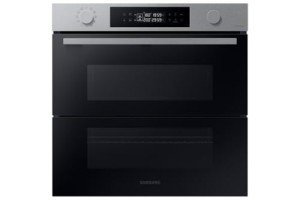11 Methods To Totally Defeat Your Electric Integrated Oven
The Rise of Electric Integrated Ovens and Hobs: A Comprehensive Guide
In the world of modern-day kitchens, electric integrated ovens and hobs have become important appliances, offering effectiveness, style, and convenience. As cooking practices develop, so too do the innovations that make cooking much easier and more pleasurable. This short article looks into the functions, advantages, setup factors to consider, and maintenance ideas for electric integrated ovens and hobs, while attending to common frequently asked concerns.
What is an Electric Integrated Oven and Hob?
An electric integrated oven and hob is a combination cooking device that seamlessly suits kitchen cabinets. Designed to enhance area and visual appeal, these appliances provide the dual functionality of an oven and a hob (cooktop) without compromising on performance.
Secret Features of Electric Integrated Ovens and Hobs
- Space-Saving Design: These appliances are built to fit neatly into kitchen systems, optimizing readily available space.
- Touch Control Panels: Many models include touch-sensitive controls for easy operation and sleek look.
- Advanced Cooking Functions: Options like convection baking, grilling, and steaming deal with various cooking designs.
- Energy Efficiency: Electric integrated ovens normally offer much better thermal efficiency compared to traditional gas models.
- Security Features: Child locks, automated shut-off, and heat signs boost security during cooking.
Advantages of Electric Integrated Ovens and Hobs
The adoption of electric integrated ovens and hobs in families features numerous benefits that interest a broad range of cooking enthusiasts, from beginner cooks to professional chefs. Here are some of the most significant advantages:
1. Effectiveness and Consistency
- Uniform Cooking: Electric ovens and hobs provide consistent heat distribution, leading to uniformly prepared food.
- Reduced Cooking Times: Advanced technologies, such as induction heating, can considerably reduce cooking times.
2. Easy to Clean
- Smooth Surfaces: The sleek surface areas of integrated designs remove food traps, making them easy to clean down.
- Self-Cleaning Options: Many modern ovens featured self-cleaning functions that streamline upkeep.
3. Aesthetic appeals
- Modern Look: An integrated design provides a unified appearance in the kitchen, making the area appear more modern-day and curated.
4. Flexibility
- Multi-Functionality: Cooking alternatives range from baking and barbecuing to frying and simmering, dealing with diverse culinary needs.
- Time-Saving: Can cook multiple meals simultaneously, optimizing meal preparation.
5. Cost-Effectiveness
- Lower Energy Bills: Electric appliances are generally more efficient, resulting in potential cost savings on energy costs with time.
Setup Considerations
Integrating electric ovens and hobs into your kitchen needs appropriate planning and consideration. Here are some vital elements to bear in mind:
- Space Measurement: Ensure that the dimensions of the device line up with the designated installation space.
- Electrical Requirements: Check for sufficient electrical supply, consisting of voltage and amperage to support the appliance.
- Ventilation Needs: While electric appliances do not require gas ventilation, adequate space for air flow is still required.
- Cabinet Compatibility: Ensure cabinets can support the combined weight of the oven and hob.
- Expert Installation: Engaging with a qualified service technician is advised for safe and compliant setup.
Upkeep Tips for Electric Integrated Ovens and Hobs
Keeping an electric integrated oven and hob makes sure durability and optimum performance. Here are some upkeep practices:
- Regular Cleaning: Wipe down surface areas routinely and guarantee spillages are cleaned as quickly as possible.
- Examine Seals: Ensure that door seals are intact to avoid heat loss, which can affect cooking performance.
- Self-Cleaning Cycle: Utilize the self-cleaning function if available, at least once every few months.
- Check Wiring and Cords: Check for harmed cables or connections to avoid electrical threats.
- Arrange Professional Servicing: Regularly arranged service can determine concerns before they become substantial problems.
Regularly Asked Questions (FAQs)
1. Are electric ovens better than gas ovens?
Electric ovens offer more constant heat and often have features like convection cooking, which can enhance the cooking experience. Numerous users find them easier to clean up and much safer than gas ovens.
2. What is the distinction between induction and ceramic hobs?
Induction hobs utilize magnetic fields to heat pots and pans straight, while ceramic hobs use electric coils below a glass surface area to heat up the cooking surface. Induction hobs are normally more energy-efficient and much faster than ceramic choices.
3. Can I install an electric oven and hob myself?
While it is possible for knowledgeable DIY lovers to install their appliances, expert setup is advised to ensure compliance with safety standards and regional policies.
4. How do Best built in oven and gas hob packages understand if my oven is carrying out effectively?
Screen cooking times and temperature level settings. If food is regularly undercooked or overcooked, it might show that the oven requires recalibration or maintenance.
5. How can I improve the lifespan of my electric oven and hob?
Regular cleaning, appropriate usage, and routine professional maintenance can substantially extend the lifespan of these appliances. Avoiding quick temperature level modifications can also help in preserving their stability.
Electric integrated ovens and hobs represent the advancement of cooking appliances, weding performance with modern design. Their performance, ease of use, and visual appeal make them an exceptional option for modern kitchens. As cooking innovation continues to advance, both home cooks and culinary experts can anticipate even higher innovations in the realm of electric integrated cooking solutions.
With the best maintenance and setup practices, these appliances can boost both the cooking experience and the overall performance of the kitchen area.
